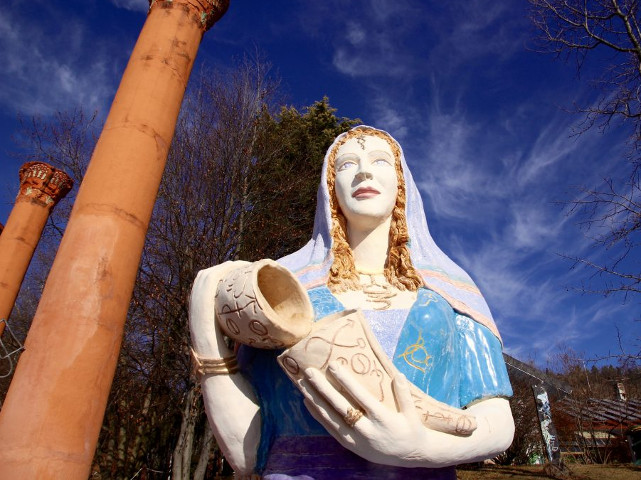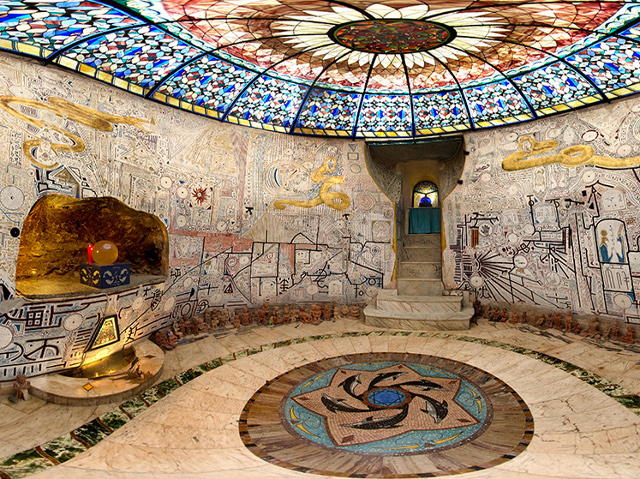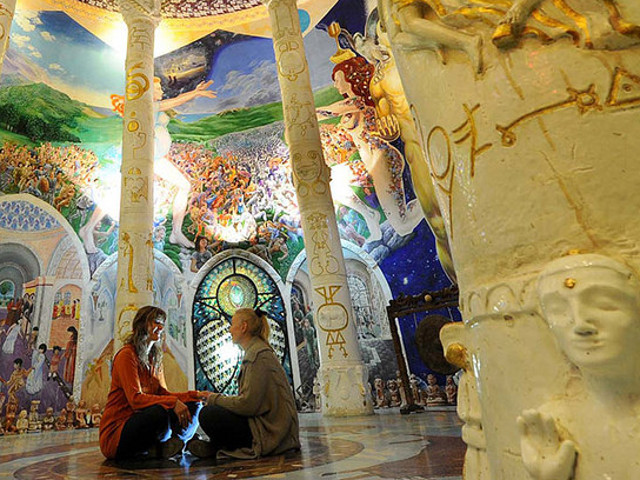The sacred art in the Temples of Humankind plays the role of creating a bridge between our material plane and the subtle dimensions of existence, through a language that makes it possible to establish contact with the forces that inhabit the spiritual ecosystem in which we are immersed.
So, sacred art expresses an artistic richness where paintings, mosaics, stained glass and sculptures – as well as dance, music and theatre – are not just aesthetic decorations or entertainment, but true communication codes that draw from the depths of our hearts, in the search for the original, universal signs that humans used to start relating with the invisible.
Sacred Language is the foundation of every expression of sacred art in Damanhur, because it expresses archetypal concepts and infuses meaning in every detail through words, graphic symbols, and dance gestures. The intertwining of signs in Sacred Language in the Temples creates mandalas, spiritual symbols cherished in Hindu and Buddhist sacred art, which contain prayers and information about the hall you are in.
The Temples of Humankind can be read like a great three-dimensional book of knowledge, accessible to all those who know the code for reading it: the Sacred Language symbols. The energetic activation of the hall is connected to the emotion that sacred art stimulates in every human being.
Even those who do not believe in a transcendent dimension of life are touched by the beauty and the particular energy of many temples of the past and present, because art is a universal language that resonates with the divine spark in every human being, and it helps us to feel connected with something greater, with an “immensity” that sacred art invokes. This is why in Latin, Templum originally means: a sacred enclosure destined for contemplation of the cosmos and contact with its forces.










